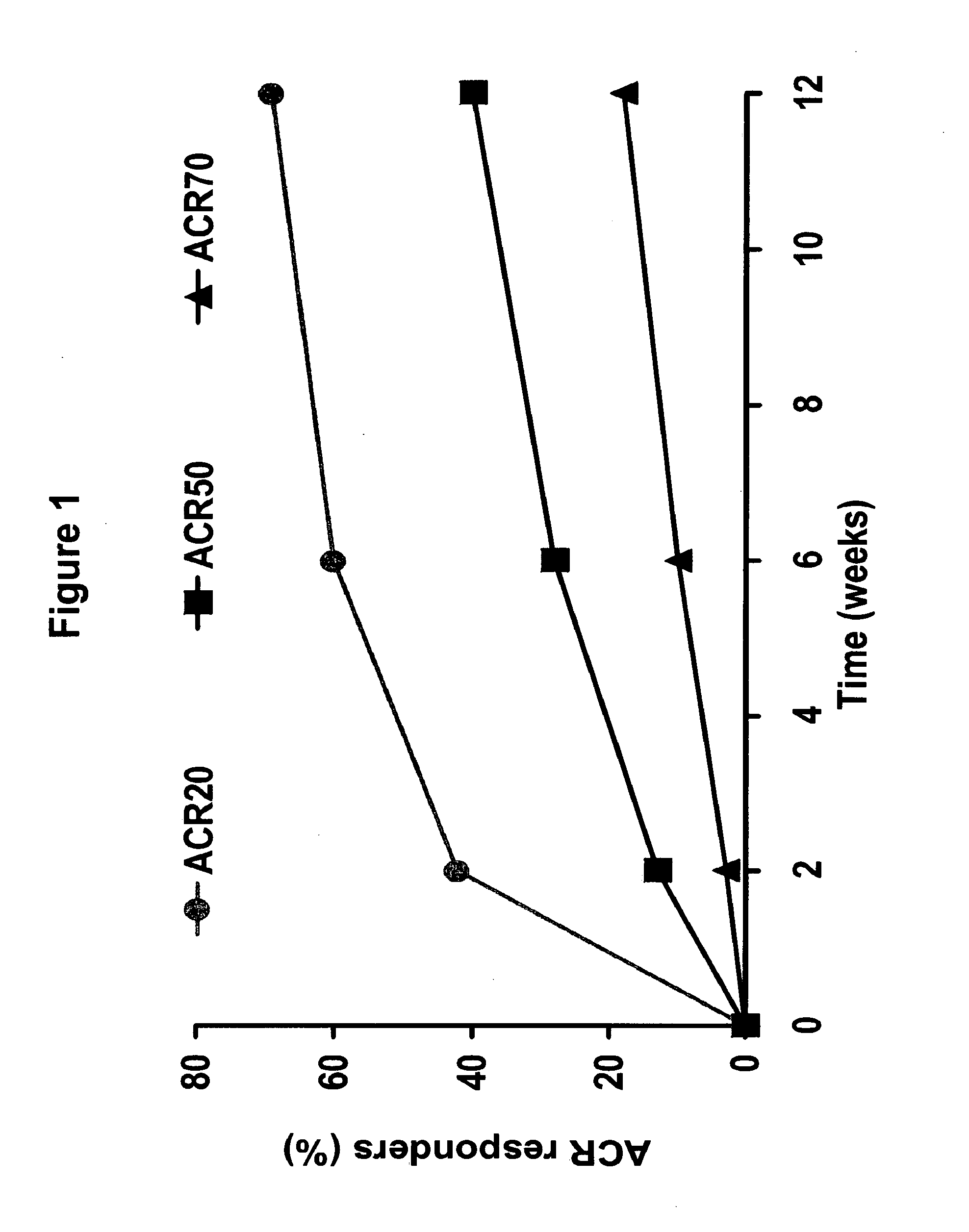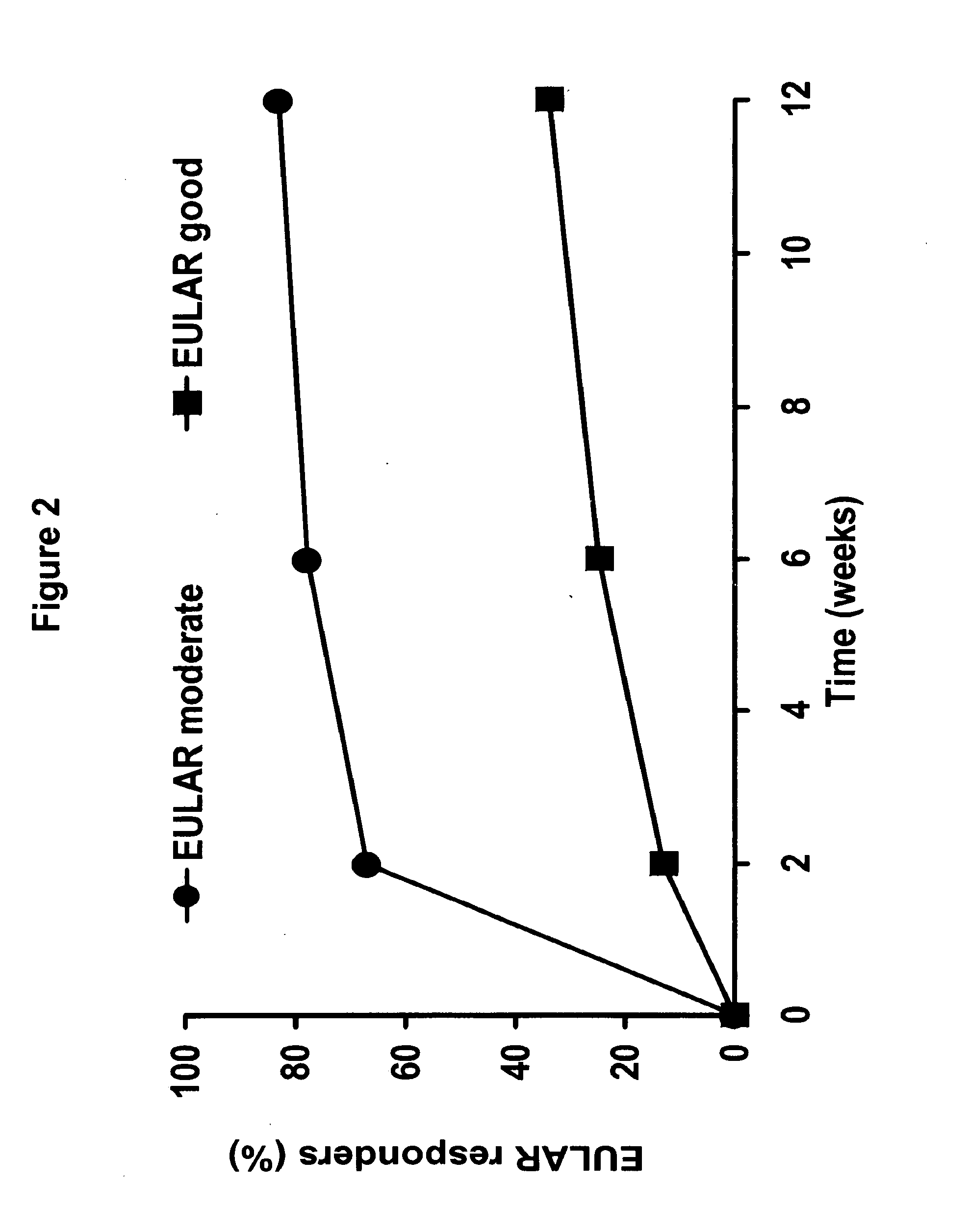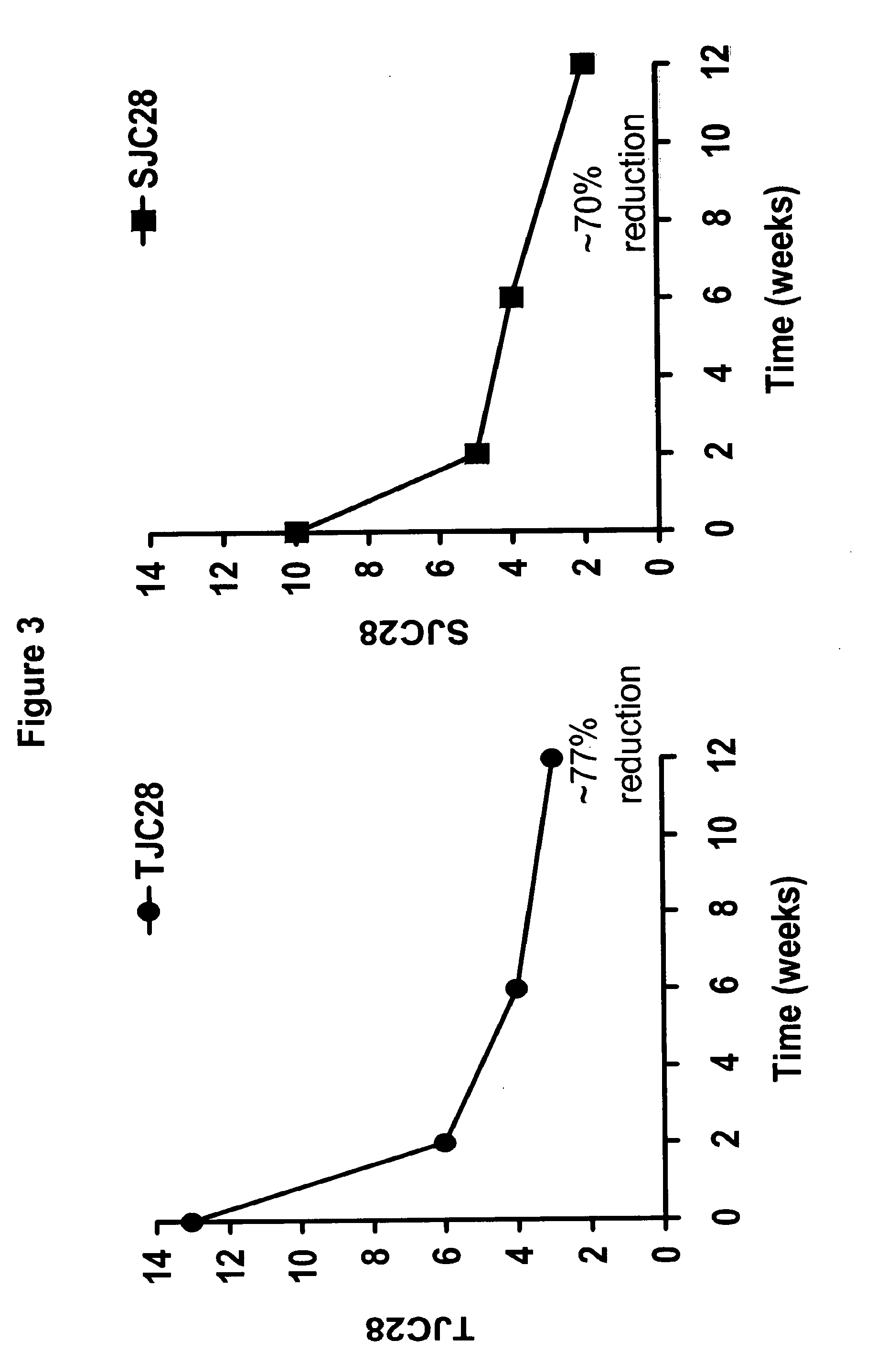Uses and compositions for treatment of rheumatoid arthritis
a technology for rheumatoid arthritis and compositions, which is applied in the field of rheumatoid arthritis treatment with compositions and uses, can solve the problems of no known cure for rheumatoid arthritis, serious side effects of corticosteroids, and substantial loss of mobility, and achieve the effect of safe and effective treatment of ra
- Summary
- Abstract
- Description
- Claims
- Application Information
AI Technical Summary
Benefits of technology
Problems solved by technology
Method used
Image
Examples
example 1
Efficacy and Safety of Adalimumab (HUMIRA)
[0386]An open-label, multi-center study (Study A) was performed to assess the safety and efficacy of the fully human, anti-TNF monoclonal antibody adalimumab when added to insufficient standard anti-rheumatic therapies in patients with active rheumatoid arthritis. The following study included 6,610 patients who were enrolled in 11 European countries plus Australia, including 450 sites. The following study was an open-label trial with “real-life” character, wherein the inclusion requirements were close to national guidelines / reimbursement criteria; there was add-on of adalimumab to standard of care; and included a broad patient population, including previous biologic experience. 3,813 patients were analyzed for this study.
[0387]The study design included a 12 week open label treatment period followed by a continuation period examining safety and efficacy. Adalimumab was administered to patients subcutaneously (sc) at a dose of 40 mg every othe...
example 2
Efficacy Evaluation of Adalimumab (HUMIRA) in Patients Switching from Prior Biologic DMARD Therapies
[0394]The following study was an open-label, multi-center study (Study A) which was performed to assess the safety and efficacy of the fully human, anti-TNF monoclonal antibody adalimumab when added to insufficient standard antirheumatic therapies in patients with active rheumatoid arthritis. The study design and inclusion criteria are described above in Example 1. Patients available for efficacy analysis included n=1,636 patients with concomitant DMARD information, of which 16% (n=262) had used prior biologics. Prior therapy with biologics at study entry are described above in Table 5. Baseline demographics are described below in Table 6:
TABLE 6WithoutWithPrior BiologicsPrior Biologics(n = 1374)(n = 248*)Gender (% female)8081Age (yrs)5352Disease duration (yrs)1112*14 patients with prior biologic experience did not have demographic information available at time of analysesMean Values
B...
example 3
Three Years of Adalimumab (HUMIRA) Plus Methotrexate Therapy Sustains Radiographic Inhibition of Structural Damage in Patients with Long-Standing Rheumatoid Arthritis
[0399]RA is a chronic, autoimmune disease which is characterized by joint inflammation, structural joint damage, extra-articular manifestations, and reduced life expectancy. Adalimumab has been shown to inhibit radiographic progression when used to treat patients with moderate to severe RA. The following study was performed to determine long term radiographic and clinical efficacy, as well as safety, in patients with long-standing RA who had an inadequate response to methotrexate (mtx).
[0400]The following study was conducted to assess the sustained response to adalimumab treatment for 3 years. Patients with a confirmed diagnosis of RA who were older than 18 years were eligible for the study. In addition, patients had to have been treated with mtx for at least 3 months prior to enrollment in the study. Stable mtx dose fo...
PUM
| Property | Measurement | Unit |
|---|---|---|
| RA | aaaaa | aaaaa |
| mean joint erosion score | aaaaa | aaaaa |
| surface plasmon resonance | aaaaa | aaaaa |
Abstract
Description
Claims
Application Information
 Login to View More
Login to View More - R&D
- Intellectual Property
- Life Sciences
- Materials
- Tech Scout
- Unparalleled Data Quality
- Higher Quality Content
- 60% Fewer Hallucinations
Browse by: Latest US Patents, China's latest patents, Technical Efficacy Thesaurus, Application Domain, Technology Topic, Popular Technical Reports.
© 2025 PatSnap. All rights reserved.Legal|Privacy policy|Modern Slavery Act Transparency Statement|Sitemap|About US| Contact US: help@patsnap.com



